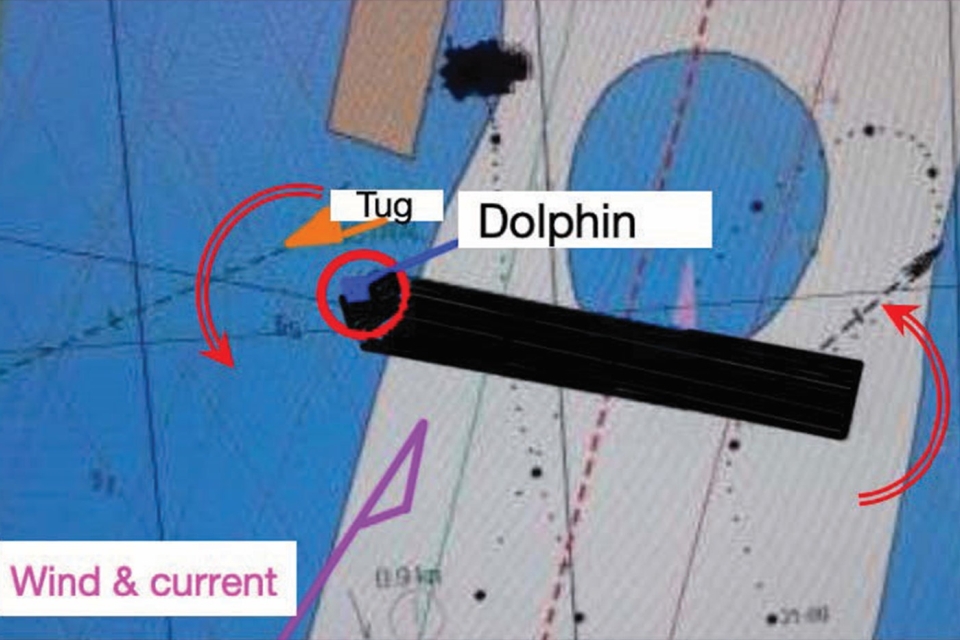Consider the effects of currents and wind, as they can complicate a manoeuvre. The Nautical Institute gives this warning in its latest Mars Report in which a tanker hit a mooring dolphin while trying to leave a berth.
The Nautical Institute gathers reports of maritime accidents and near-misses. It then publishes these so-called Mars Reports (anonymously) to prevent other accidents from happening. A summary of this incident:
A tanker in ballast was departing from a river port, from a position which required a turn of approximately 180°. There was one pilot on board and one tug (the only one available) made fast aft. Winds were from the south at about 20-25 knots and there was a northerly current setting. Once all lines were clear, the vessel was taken off the berth and a turn to port was initiated.
The tugboat aft was ordered to move to vessel’s starboard bow to better assist in the rotation. With the tug pushing at the starboard bow, the vessel was now moving aft with a speed over ground (SOG) of 2.4 knots. Soon, the vessel had turned about 60° to port, but the current and wind were moving the vessel to the north. The main engine was set to half ahead while rudder was hard to port.
As the vessel achieved approximately 90° of the turn, it was reported to be 10 metres from a dolphin on the starboard bow. The tug was at full power, but could not control the vessel’s set toward the dolphin and had to abandon its position for fear of being crushed.
The vessel’s main engine was set at full astern, but the starboard bow brushed against the south corner of the mooring dolphin. Within minutes, the vessel completed the turning manoeuvre and commenced the outbound passage to the anchorage, where damage to the hull was observed.

Also read: Miscommunication results in ship hitting mooring dolphin
Advice from The Nautical Institute
- In a very restricted waterway and with wind and current conditions that made for a complicated 180° turn, the use of one tug is, in retrospect, a hazardous decision.
- Only one tug was available in this port, so the hazards were “normalised” by the master and pilot as “acceptable”.
- Plan a manoeuvre beforehand and think about the forces acting on your vessel. In this case, the vessel had to come 180° after leaving the berth and at one point was perpendicular with the current in a restricted channel. The tug could not overcome the forces acting on the hull pushing it to the North.
Also read: Ship hits mooring dolphins resulting in millions worth of damage
Mars Reports
This accident was covered in the Mars Reports, originally published as Mars 202357, that are part of Report Number 374. A selection of the Mars Reports are also published in the SWZ|Maritime magazine. The Nautical Institute compiles these reports to help prevent maritime accidents. That is why they are also published (in full) on SWZ|Maritime’s website.
More reports are needed to keep the scheme interesting and informative. All reports are read only by the Mars coordinator and are treated in the strictest confidence. To submit a report, please use the Mars report form.
Also read: Tug order mix-up leads to allision and shore crane collapse








